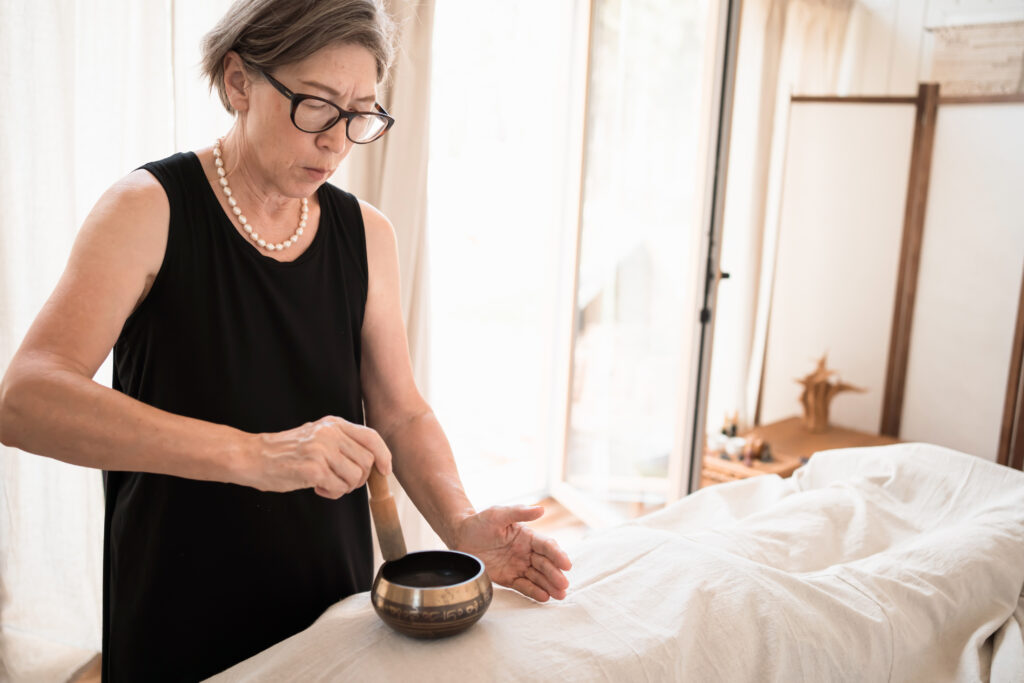When it comes to healing, the environment we create can be just as powerful as the techniques we use. The atmosphere in which healing occurs sets the tone for safety, transformation, and connection. For practitioners, creating a sacred space isn’t just a ritual—it’s a vital part of the work, a way to welcome in the energies needed for profound shifts, and a signal to clients that they’ve entered a realm designed specifically for their healing. Here’s how to create a truly sacred space that elevates your practice and enhances the healing experience for you and your clients, in short – here are the Best Practices for Practitioners
1. Define Your Intention for the Space
Before you start setting up your space, get clear on its purpose. Every healing session begins with intention, and the same goes for the environment in which it’s held. Whether it’s for Reiki, breathwork, sound healing, or other modalities, take a moment to define your intention for the space. What kind of energy do you want it to hold? Peace, empowerment, release, or grounding? This initial step is crucial as it sets the energetic foundation for everything that follows.
2. Choose the Right Location
The physical location of your healing space matters. Ideally, it should be a place where distractions are minimal, noise is limited, and privacy is ensured. If you’re working from home, choose a room that can be dedicated solely to healing, even if it’s only during sessions. If you’re renting a space, try to visit at different times of the day to see how the energy feels. A good location feels welcoming, allowing clients to relax as soon as they enter and for us here at SOSHA, is one of the key Best Practices for Practitioners.
3. Declutter and Cleanse
Clutter can carry stagnant energy, making it harder for the healing energy to flow freely. Clear away anything unnecessary and keep the space as simple as possible. A clean space promotes clarity and openness.
After decluttering, energetically cleanse the room. Smudging with sage, palo santo, or other herbs is a traditional method, but you can also use sound bowls, bells, or even a simple intention to clear the space. Visualize old, stagnant energy leaving and fresh, healing energy entering.
4. Incorporate Elements of Nature
Nature has an inherently calming and grounding energy, making it a valuable addition to any healing space. Bringing in elements like plants, crystals, or a small water feature can help create a balanced atmosphere. Crystals like amethyst, selenite, or rose quartz are particularly good for enhancing healing energy. Even a simple plant or a bowl of fresh flowers can make the space feel more vibrant and alive.
5. Use Lighting to Set the Mood
Lighting plays a significant role in creating a sacred space. Natural light is ideal, as it brings warmth and vitality to the room. If that’s not possible, opt for soft, warm lighting that can be adjusted based on the type of session. Avoid harsh fluorescent lights, as they can feel too clinical and inhibit relaxation. Candles, Himalayan salt lamps, or soft, dimmable lamps create a gentle, inviting glow that encourages clients to let go and relax.
6. Choose the Right Colors
Colors have a profound effect on mood and energy. When designing your space, consider the colors you use. Earthy tones, soft pastels, or shades of blue and green tend to create a calming environment. If your practice involves more intense energy work, like trauma release, shades of purple or deep blue can bring a sense of spiritual connection and protection. Your choice of colors should align with the intentions you’ve set for the space.
7. Create a Sensory Experience
The most powerful sacred spaces engage all the senses, creating a holistic healing experience. Here’s how to incorporate sensory elements:
• Smell: Essential oils, incense, or natural sprays can create an atmosphere that is relaxing, uplifting, or grounding, depending on the scent.
• Sound: Soft background music, nature sounds, or the gentle ringing of chimes can set the tone and help clients ease into the session. Sound healing instruments like singing bowls can also be used to create a calming resonance.
• Touch: Add soft blankets, cushions, or floor mats that provide comfort. The tactile experience should be one of nurturing, ensuring clients feel held and supported throughout the session.
8. Keep Personal Energy in Check
As a practitioner, you are part of the space’s energy. How you show up matters. Take time to ground yourself before each session. You can do this through meditation, breathwork, or even a quick energy-clearing ritual. Enter the space with a clear mind and an open heart, ready to hold a safe container for your clients. Remember, your presence sets the tone for the space, so maintaining your own energy is as important as maintaining the room itself.
9. Add Meaningful Objects
Objects that hold personal or spiritual significance can enhance the sacredness of your space. This could be an altar with items like crystals, feathers, or sacred symbols that resonate with you and your work. Having these objects in the space creates a focal point for meditation and intention-setting, amplifying the energy of the room. However, be mindful not to overwhelm the space with too many items; every object should have a purpose.
10. Invite in Positive Energy
At the beginning of each session, set a welcoming tone. This could involve lighting a candle, saying a short prayer or mantra, or simply taking a deep breath and inviting positive energy into the room. Remember that your clients are entering a sacred, intentional space. Welcoming them with a warm smile, a genuine greeting, and a calming presence goes a long way in setting the tone for a healing session.
Concluding Best Practices for Practitioners: Your Sacred Space is an Extension of Your Practice
Creating a sacred space is about more than aesthetics—it’s about aligning the physical environment with the healing energy you aim to cultivate. Whether you’re working in a professional studio, a home-based setting, or even outdoors, the care and intention you put into your space will be felt by your clients. At The School of Spiritual Healing Arts (SOSHA), we believe that the environment is a powerful aspect of healing, just as important as the modalities themselves which is why adhering to these Best Practices for Practitioners is vital for practice.
As a practitioner, the sacred space you create reflects your commitment to the healing journey, both for yourself and for your clients, and making sure you adhere to these Best Practices for Practitioners will help you a long way when holding space as a Practitioner.

